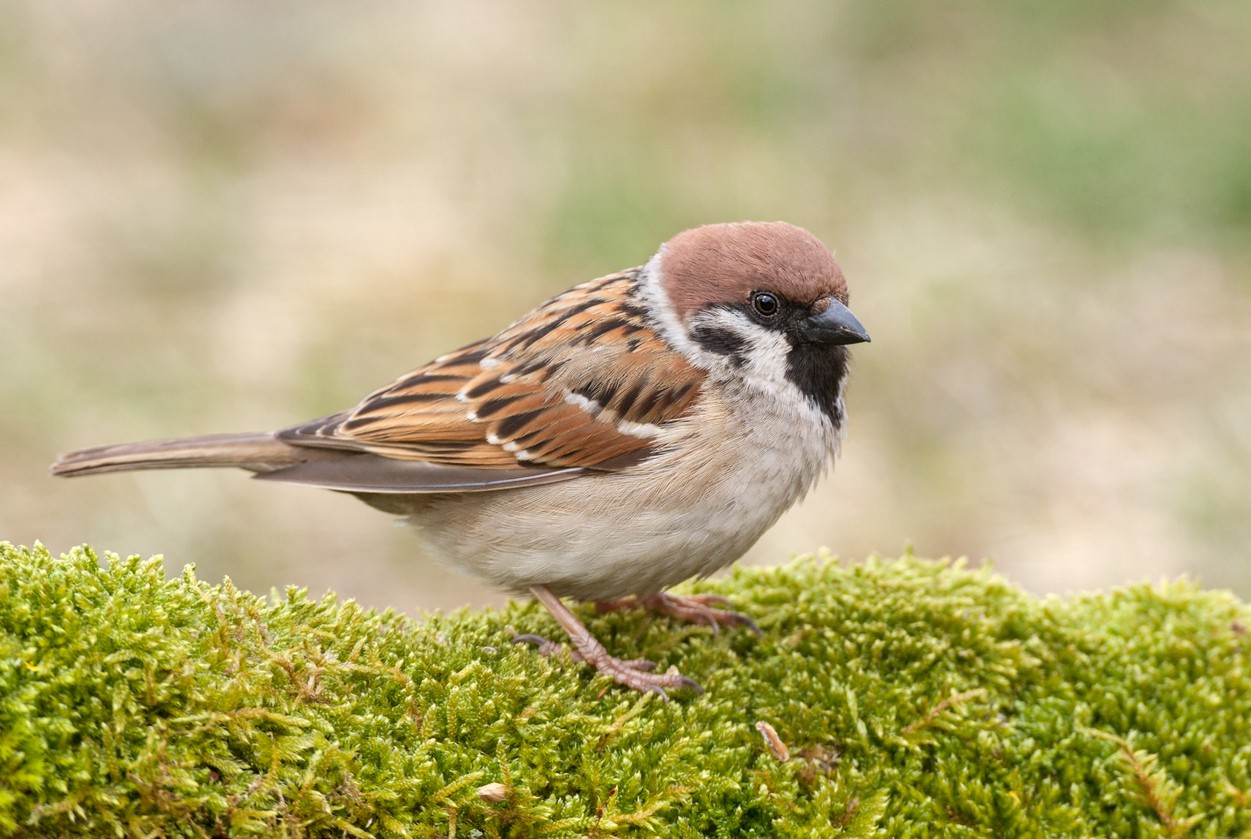Eurasian Tree Sparrow
A species of Old World Sparrows Scientific name : Passer montanus Genus : Old World Sparrows
Eurasian Tree Sparrow, A species of Old World Sparrows
Botanical name: Passer montanus
Genus: Old World Sparrows
Content
Description People often ask General Info

Description
The eurasian Tree Sparrow (Passer montanus) is a widespread sparrow of the European mainland that has been introduced to some parts of North America. Eurasian Tree Sparrow is very similar to the House sparrow (Passer domesticus) but it's smaller and neater. It prefers more natural habitats, at the edges of human activity, and inhabits farmlands, parklands, and open woods.
Size
23 - 24 cm
Life Expectancy
10 years
Nest Placement
Cavity
Clutch Size
4 - 7 eggs
Feeding Habits
Eurasian Tree Sparrow consummate a mix of grains, seeds, fruits, flowers, and invertebrates. They forage on the ground or low vegetation by picking or gleaning, occasionally hawking insects mid-flight. Habitual feeders on oats, rye, wheat, corn, and sunflower, eurasian Tree Sparrow additionally favor chicks and goosefoot seeds and frequent feeding stations for peanuts. In spring, a substantial insect diet supports their young, while late summer to fall, they exploit plant seeds, adopting a leapfrogging pattern in flocks.
Habitat
Eurasian Tree Sparrow thrives in varied habitats, from urban parks and rural woodlands in the US to European coastal cliffs and countryside with woodland patches. Preferring lower altitudes, these birds favor areas near water, such as wetlands, avoiding intensely farmed lands. Vegetation like hedgerows and bushes provides ideal conditions, as do old buildings and trees for nesting. Essential to their habitat are nest cavities found in man-made structures or natural crevices, a necessity for their survival and reproduction.
Nest Behavior
Males choose nest sites; both genders build the nest. Eurasian Tree Sparrow exhibits precise building phases: constructing the exterior sphere and then the inner cup. Breeding involves laying eggs in a sequence, with both parents involved in incubation and raising the young.
Nest Characteristics
Eurasian Tree Sparrow's nest is a cup structure located in cavities of trees, buildings, poles, fence posts, or bird boxes, 3-30 feet high. It's constructed with grass, straw, feathers, hair, cloth, string, and plant material, within a bulky sphere with a side entrance. Interior cup is ~2 inches, overall size up to 18 inches across and 17 inches tall.
Dite type
Granivorous
People often ask
General Info
Feeding Habits
Bird food type
Bird Feeder Type

Small Hopper

Small Tube Feeder

Platform
Sounds
Call
Recording location: Belgium
Song
Recording location: Japan
Call
Recording location: Netherlands
Behavior
Eurasian Tree Sparrow form monogamous pair bonds often with extra-pair copulations. The males perform elaborate displays with songs and rattling calls to attract females. They exhibit strong territoriality during breeding, defending nest sites and partners fiercely. Both sexes aggressively confront rivals. They collaboratively build nests, incubate eggs, and raise the young. Outside breeding, eurasian Tree Sparrow gather in flocks for foraging and roosting, often migrating far from natal areas.
Distribution Area
The Eurasian tree sparrow's natural breeding range comprises most of temperate Europe and Asia south of about latitude 68°N (north of this the summers are too cold, with July average temperatures below 12 ℃ and through Southeast Asia to Java and Bali. It formerly bred in the Faroes, Malta and Gozo. In South Asia it is found mainly in the temperate zone. 
Species Status
Not globally threatened.


Scientific Classification
Phylum
Chordates Class
Birds Order
Perching birds Family
Old world sparrows Genus
Old World Sparrows Species
Eurasian Tree Sparrow